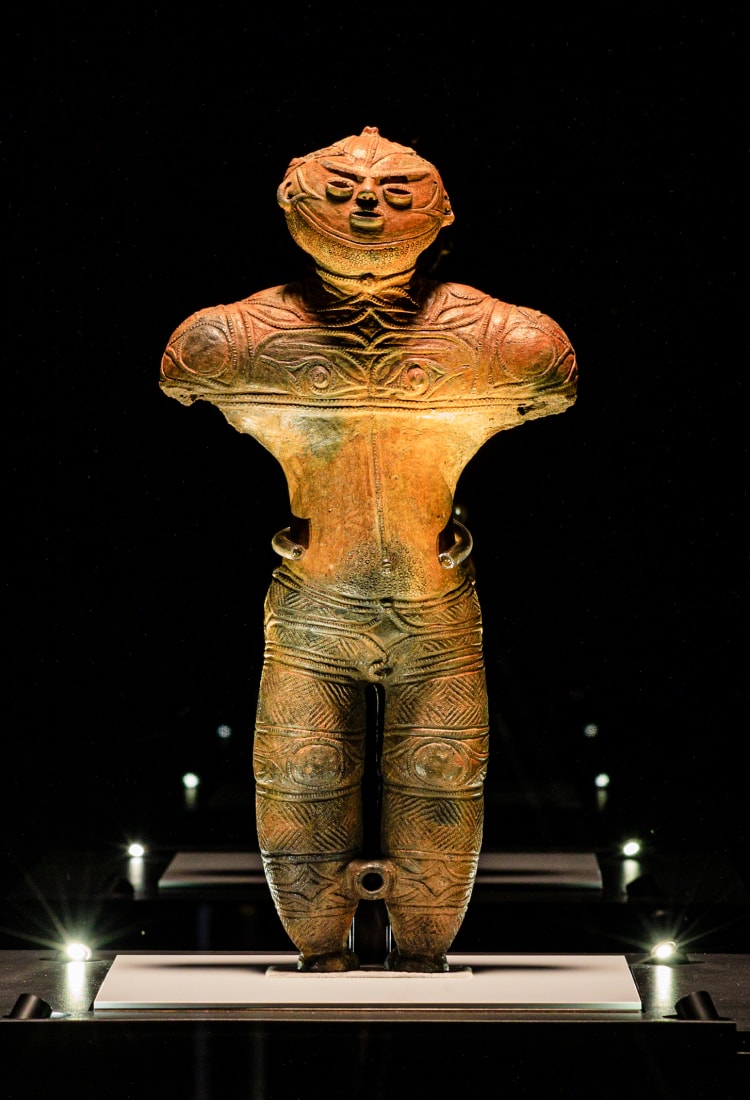
2022.01 Step into Hokkaido and Northern Tohoku’s Ancient Jomon Past Exploring the unique sites from Japan's most recent World Cultural Heritage listing
Photo credit: Hakodate City Tourism Department
The Jomon era and Japan’s prehistoric past
The Jomon Period (c. 13,000–300 BCE) was the longest in Japanese prehistory and history, leaving behind fascinating cultural artifacts that you can see for yourself in archaeological ruins and museums. But, despite its abundance of cultural remains, parts of the Jomon Period remain as mysterious as it is long. The period is famous (and named) for its Jomon or “cord-marked” pottery, which maintained its characteristic rope pattern even as it changed shape and became detailed with intricate flame embellishments. (This particular pattern was visible only in Niigata Prefecture in the middle Jomon era).
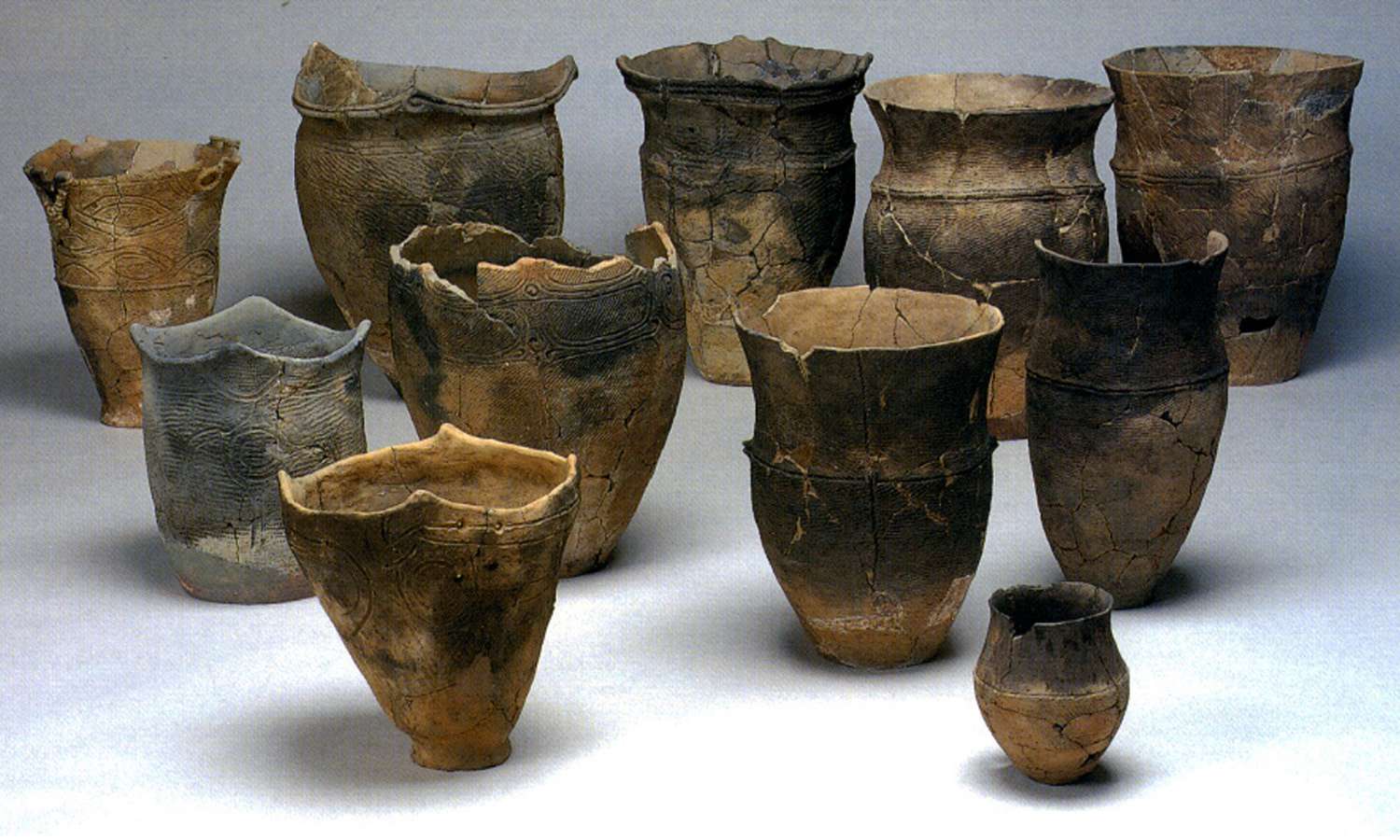
Photo credit: Jomon Archives
In addition to this fascinating pottery, the Jomon people left behind copious shell mounds, pit dwellings, clay figures and beads that give us an incredible picture of prehistoric life in Japan.
Northern Japan and its UNESCO World Heritage Sites
Northern Japan is home to the set of 17 Jomon Prehistoric archaeological sites that UNESCO added to the World Cultural Heritage List in July 2021. If you’re planning a trip to southern Hokkaido or northern Tohoku, the sites are well worth adding to your to-visit list. If you do visit, you’ll see that the sites are so well preserved or replicated, being there is like looking through a window into the past.
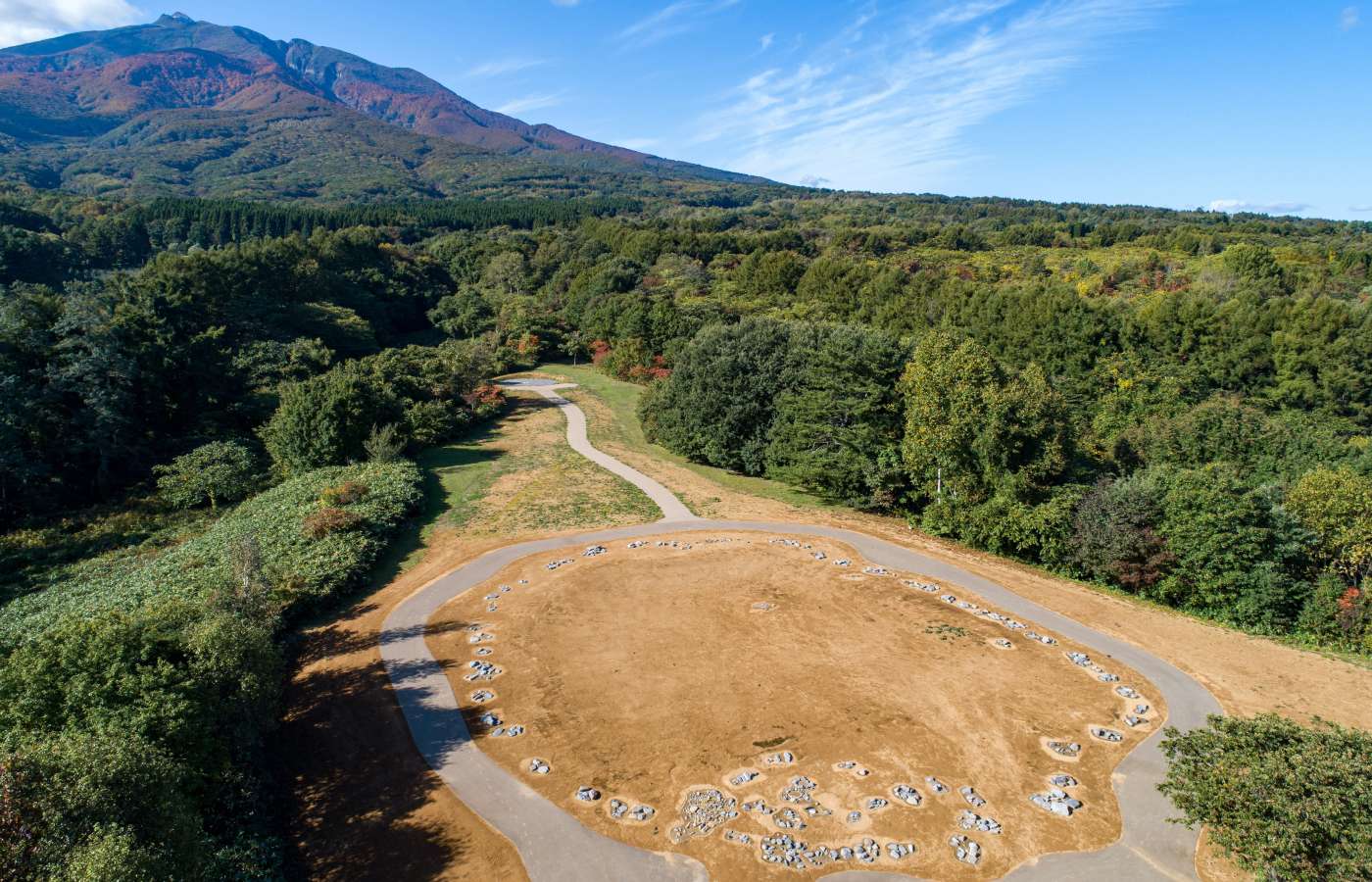
It is believed that the Omori Katsuyama Stone Circle had a ceremonial purpose.
Photo credit: Jomon Archives
The different sites produced artifacts that represent the different stages of the Jomon Period. The stages start with the Incipient Period, when the people were just beginning to move from a nomadic lifestyle to a sedentary one, and end with the Final Period. After this time, the Yayoi people introduced rice agriculture, and the Yayoi era was born.
A fascinating feature unique to the Jomon people is that, although they lived in permanent dwellings at the beginning of the Jomon Period, they continued to live in a hunter-gatherer society. If you look closely at where their settlements were placed, you’ll see how they could do this. They chose locations where there was an abundance of fruit- and nut-bearing trees and where there were also bodies of water overflowing with fish.
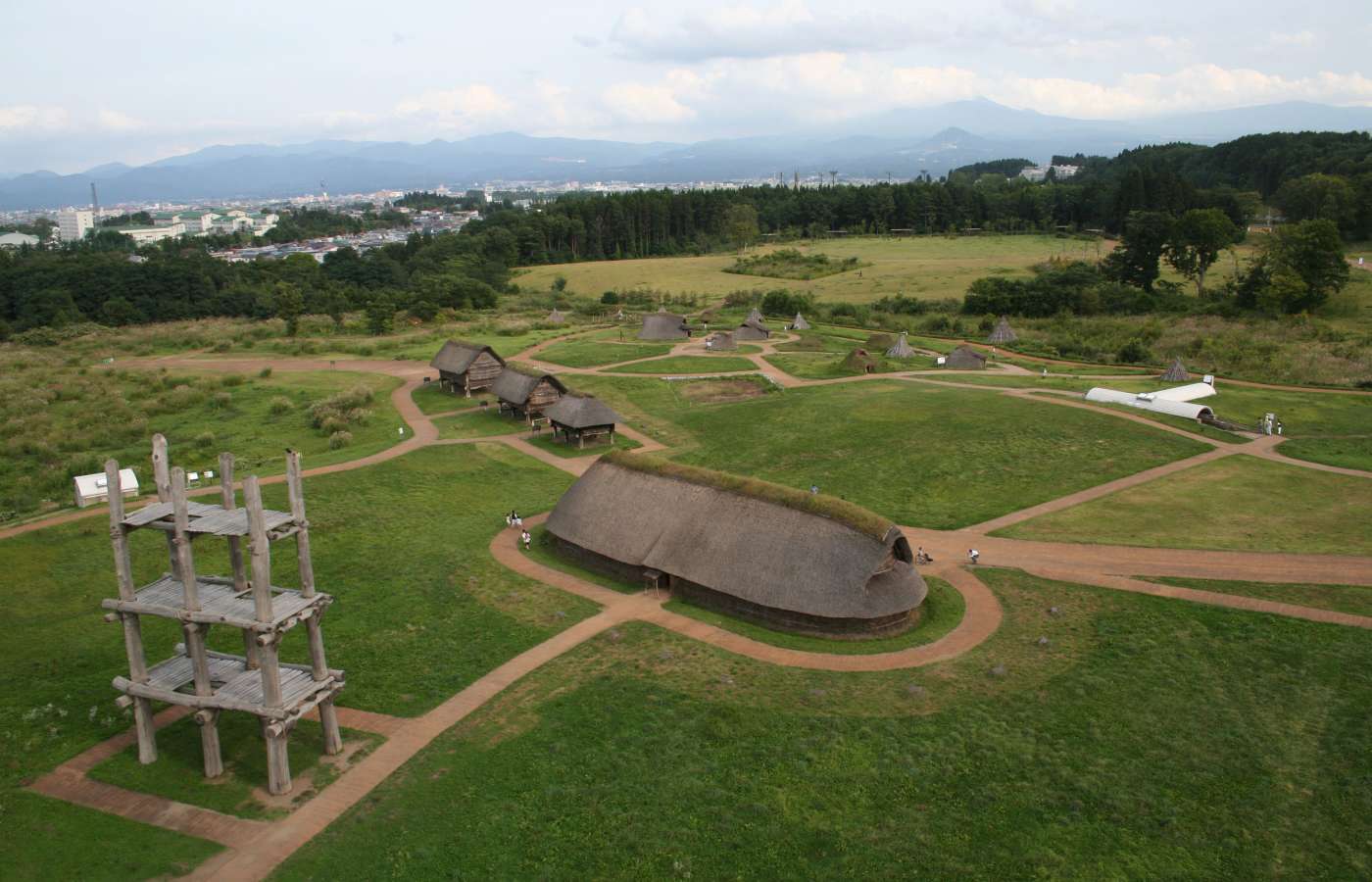
The Sannai Maruyama Site is one of the largest and offers long guided tours.
Photo credit: Jomon Archives
No doubt it was this and the Jomon people’s complex spiritual culture that swayed the UNESCO committee to register the archaeological sites officially.
Step back in time by experiencing an archaeological site tour
From the Kakinoshima Site alone, a staggering 200,000 artifacts have been excavated so far. Among them were numerous stone sinkers for fishing nets, clay tablets with children’s footprints, and at the adjacent Kakinoshima B Site, a 9,000-year-old piece of red lacquerware thought to be the oldest known lacquerware in the world was unearthed.
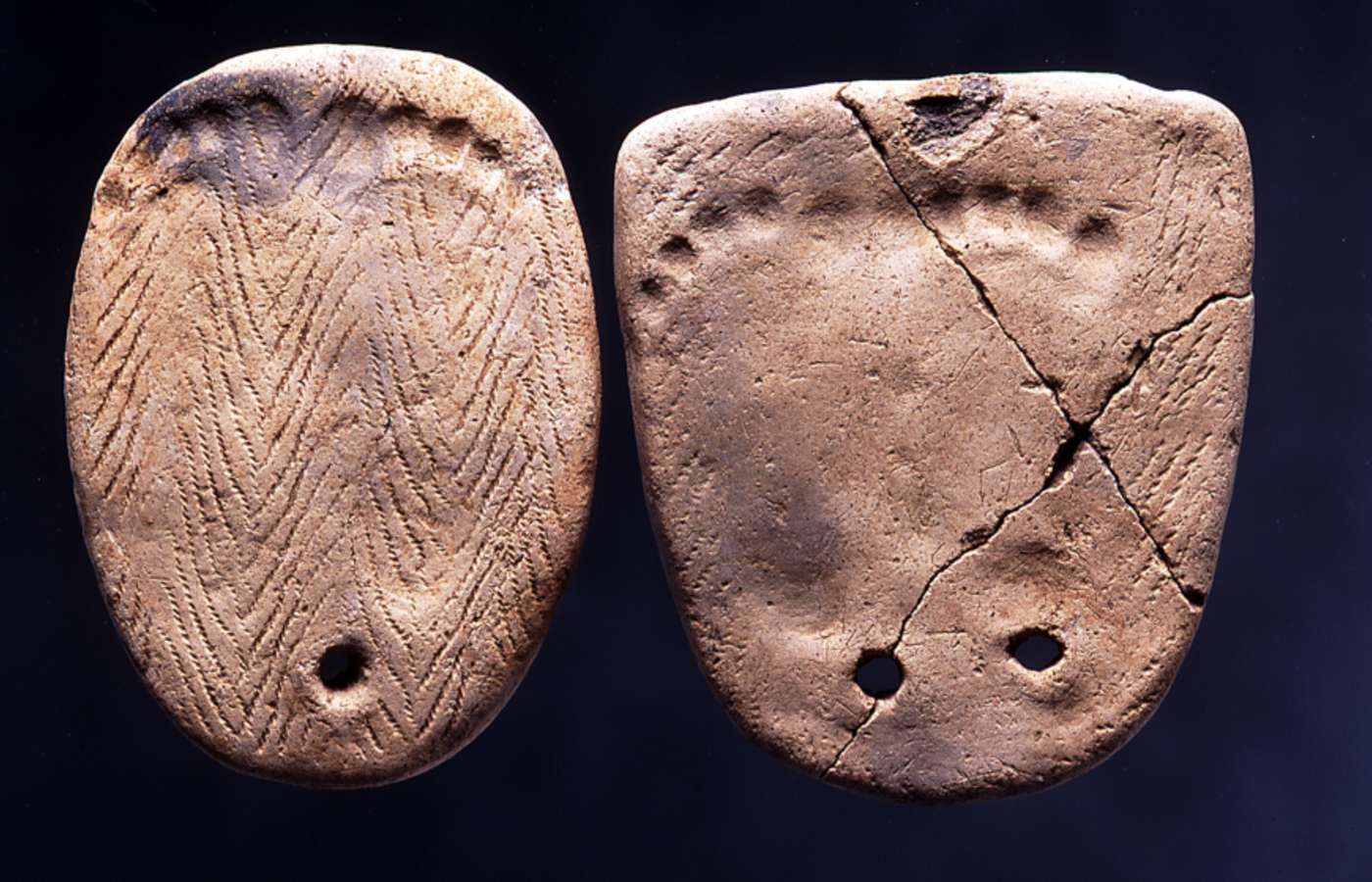
Clay tablets with imprints of children’s feet found at the Kakinoshima Site.
Photo credit: Jomon Archives
It’s here, in modern day Minamikayabe, Hakodate City, that there was an ancient community with several large and small pit dwellings and a burial site, as well as evidence of being inhabited for 6,000 years. It’s thought that people were able to live here so long thanks to its position near a coastline abundant in fish. The Kakinoshima Site was found quite recently in 2000 and then protected as a historic site since 2011.
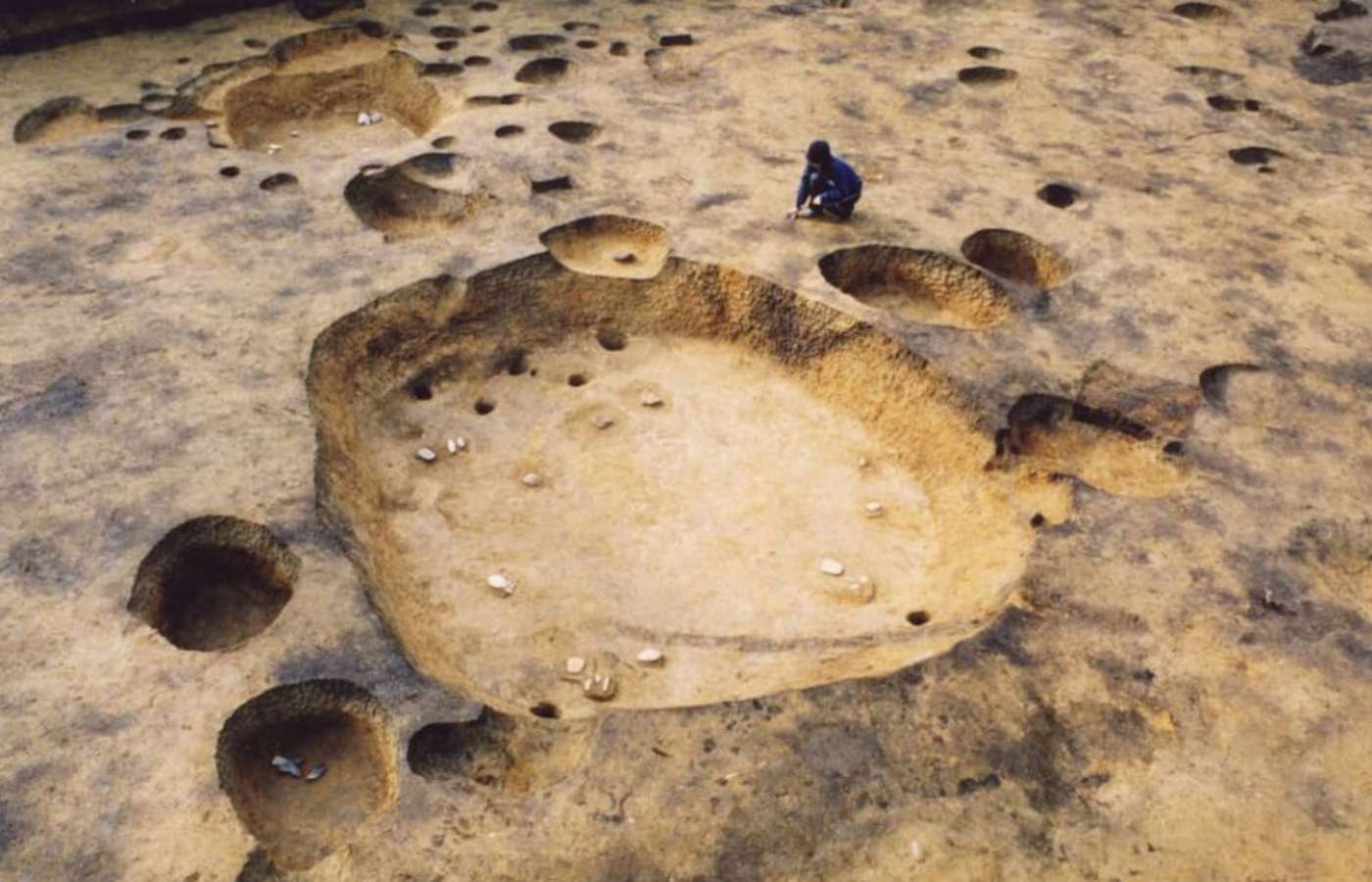
Photo credit: Jomon Archives
Not far away, you can stop by the Ofune Site where another community, this one with over 100 pit dwellings, lies. However, you’ll be interested to hear that the dwellings here are sometimes as much as two meters deeper than other similar dwellings.
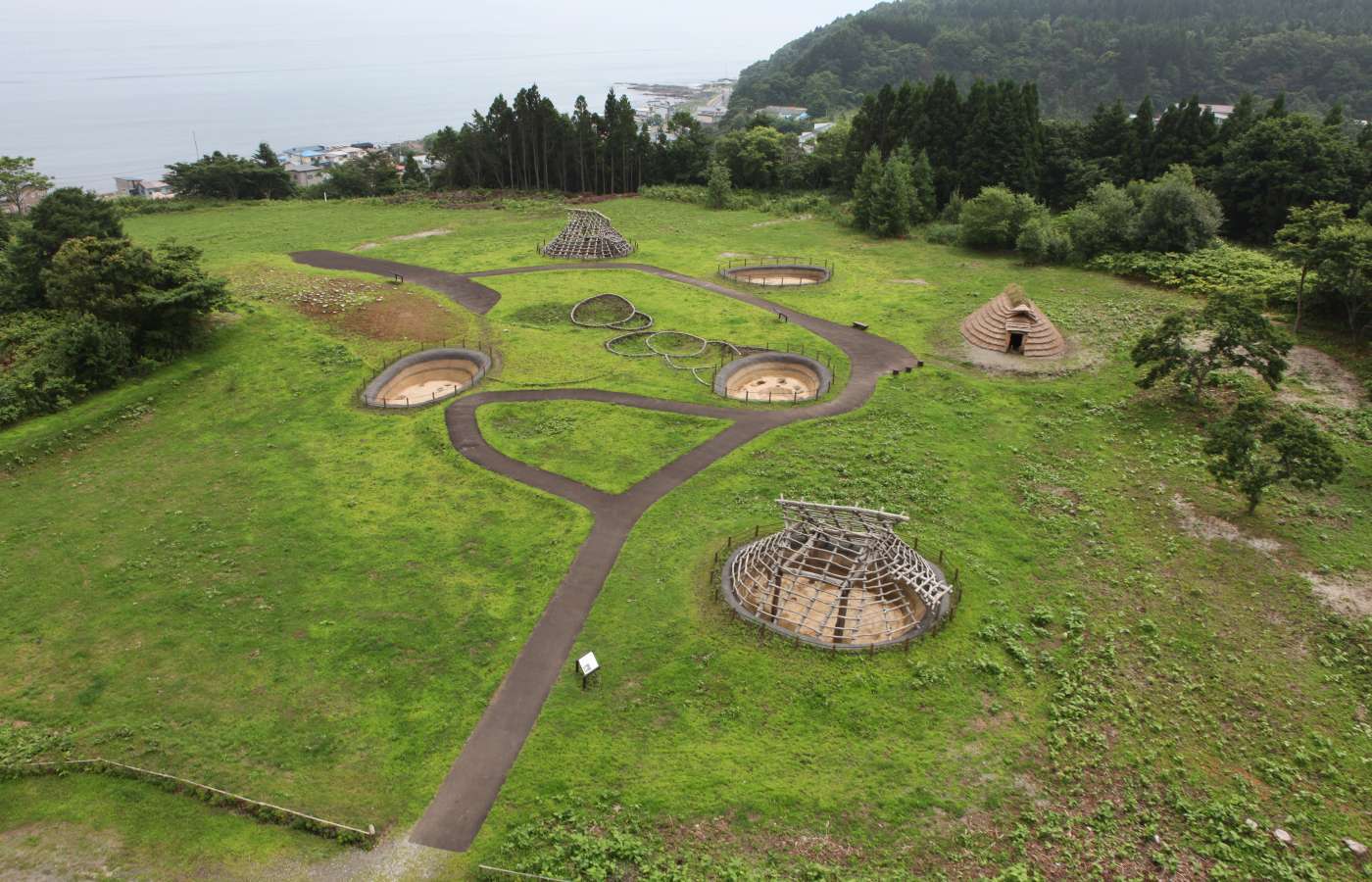
The Ofune Site provides a fascinating look at a large Jomon settlement.
Photo credit: Jomon Archives
You may also wonder how it is that we know the Jomon people were hunter gatherers. At Ofune, as well as at many other sites, you can see an earth mound that preserved the bones of different fish, marine mammals, oysters, as well as various nuts and grapes.
No matter which of the 17 sites you chose to explore, you’re sure to feel as though you’ve taken a trip back in time to experience an incredible culture.
See, feel and taste: Get up close with history at the Hakodate Jomon Culture Center
Hakodate Jomon Culture Center is famous for being the only roadside station in Japan with a museum and a national treasure. The building itself creates a barrier between the modern world where the highway lies and the prehistoric Jomon world of the Kakinoshima Site. There are four exhibition rooms for you to explore and discover over 1200 pieces of earthenware and stoneware excavated from sites in Hakodate.

Chuko dogu is a hollow clay figure and Hokkaido’s only national treasure.
Photo credit: Hakodate City Tourism Department
The Chuku Dogu, or “hollow clay figure,” is on display in one of these exhibition rooms. It was unearthed at the Chobonaino Site and is Hokkaido’s first national treasure. Its purpose and its hollowness are a mystery, so while you’re examining its unusual shape, you can come up with your own theories.
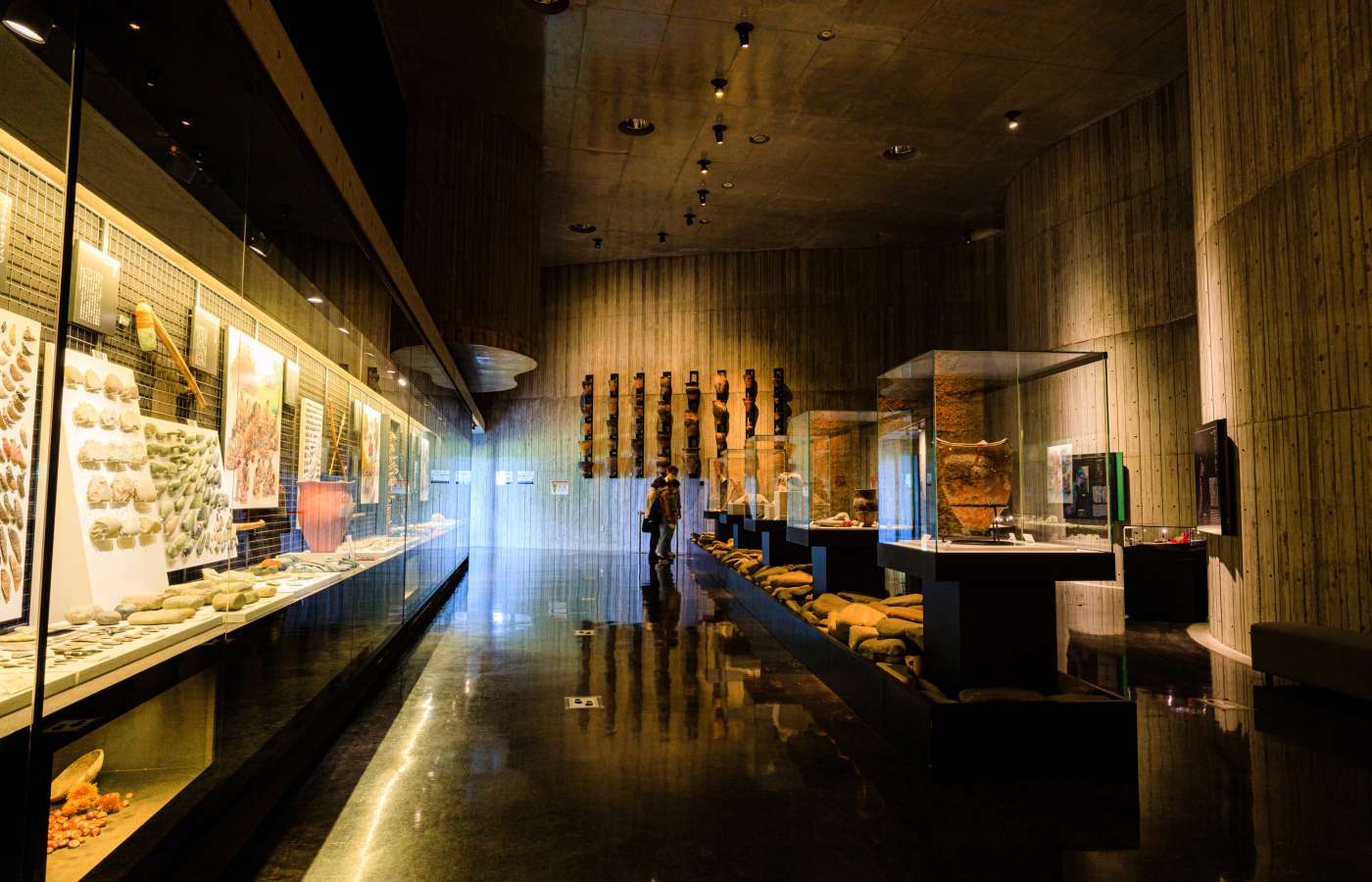
Photo credit: Hakodate City Tourism Department
In addition to the exhibition rooms, the Hakodate Jomon Cultural Center has a hands-on lab. Here, you get to experience parts of Jomon life. You can make magatama beads and try your hand at Angin Knitting.
Magatama beads provide another mystery for historians because, although we know that they were used first as decorative jewelry and later as ceremonial objects, we can only speculate at what their form is based on. Are they shaped after animal fangs, or do they symbolize the soul or maybe the moon? It’s something to ponder while you learn how to make one.
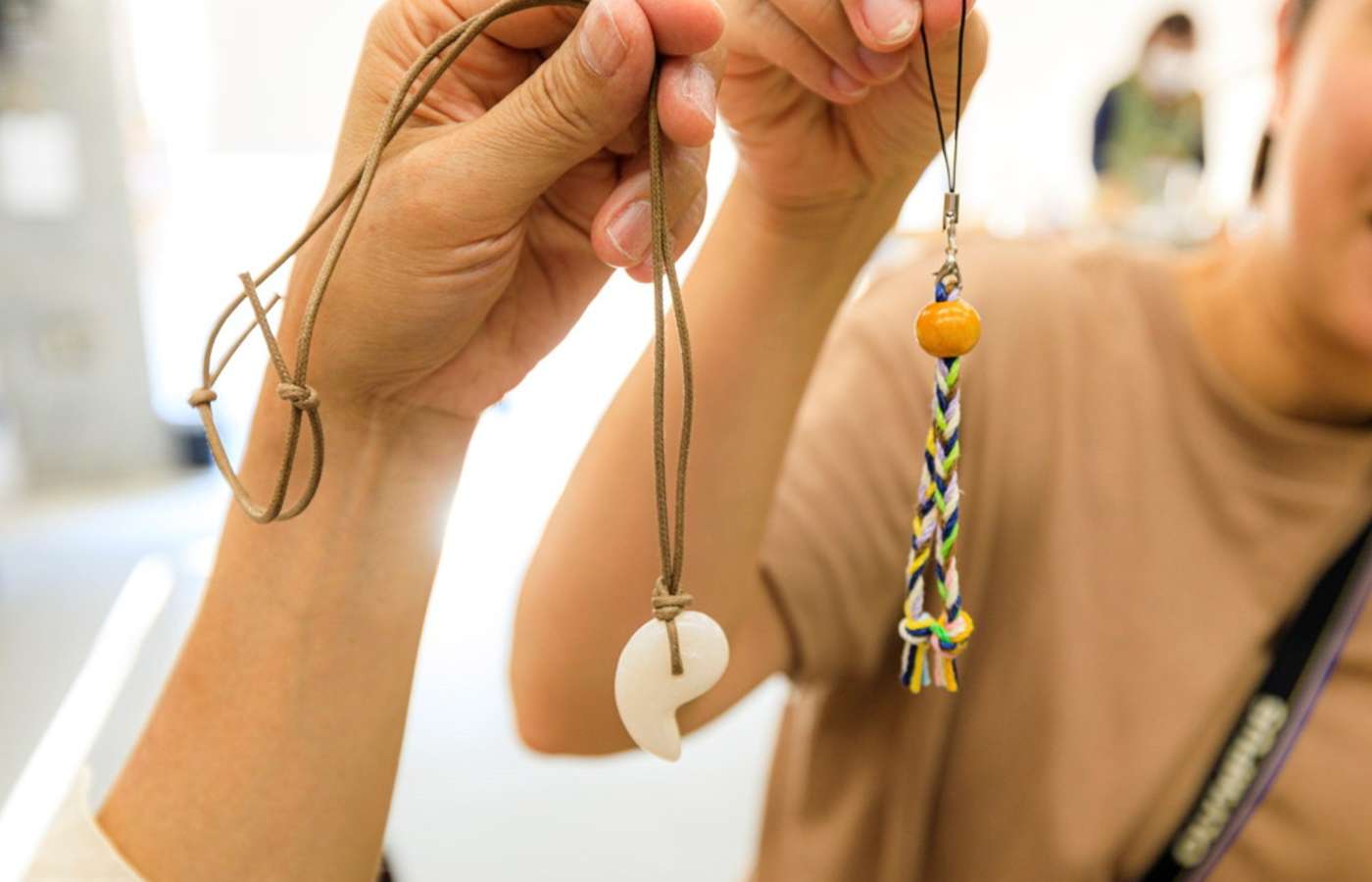
Make magatama bead jewelry in the Hakodate Jomon Cultural Center workshop.
Photo credit: @TRAVEL Hakodate (Hakodate Official Travel Guide)
The uses of Angin Knitting, on the other hand, are much clearer. It’s a method of making textiles from natural plant fibers like ramie used in echigo-jofu. Both Magatama beads and Angin Knitting long outlasted the Jomon Period, continuing to be developed and used in much later periods of Japan’s history.
But don’t forget to visit the roadside station itself either! It offers lots of souvenirs and delicacies you’ll want to try, including a baked treat embossed with the Chuku Dogu and delicious walnut soft serve not to be missed.

Delicious local flavors: a walnut soft serve!
Photo credit: @TRAVEL Hakodate (Hakodate Official Travel Guide)
Other places you might find Jomon’s influence today
While for most of the Jomon Period there was no evidence of agricultural practice, cultivation of the staple of Japanese cuisine, rice, was introduced just after the Jomon era at the start of the Yayoi era.
Inspired by the sustainable, pesticide-free and self-sufficient lifestyle of the Jomon people, as well as Jomon pottery, Jomon Soba in Yamagata Prefecture has decided to serve its signature soba dishes in replicas of Jomon pottery.
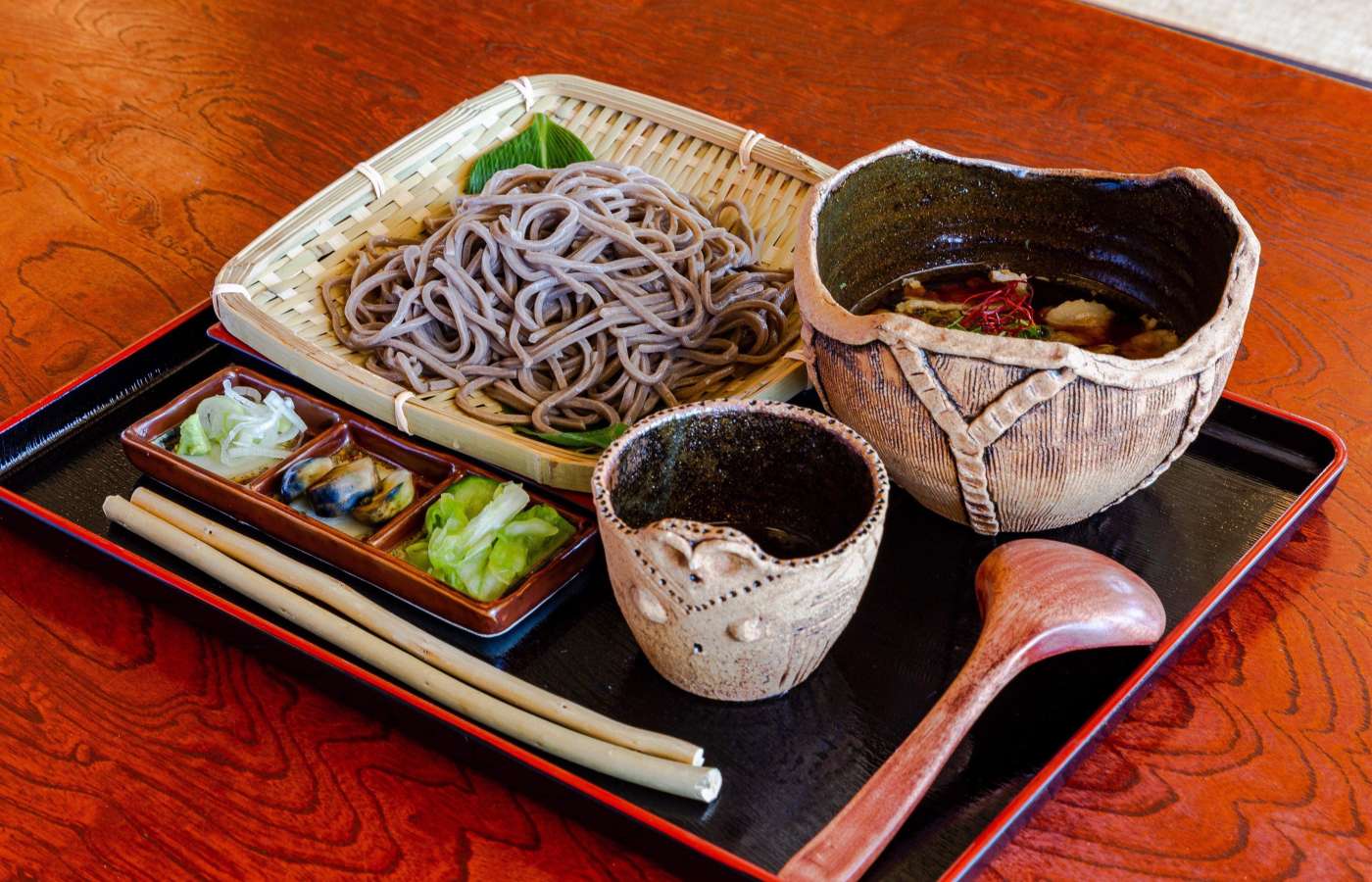
Photo credit: Jomon Soba
The young new owners are really leaning into their historical roots. If you make the trip there, you’ll be dining on Japanese tatami mats in a traditional Japanese-style wooden building with Jomon-inspired art and crockery. Itadakimasu!
Jomon popularity is once again rising because modern-day Japanese people admire how the Jomon lifestyle coexisted with nature for so long. And to spread awareness of such an amazing slice of history, there are now even dogu mascots, snacks, keychains and more.
Business hours
Due to measures to prevent the spread of COVID-19, business hours may be subject to change; please check with the venues before visiting.
Information
World Heritage Jomon Prehistoric Sites in Northern Japan |
Hakodate Jomon Cultural Center |




















































